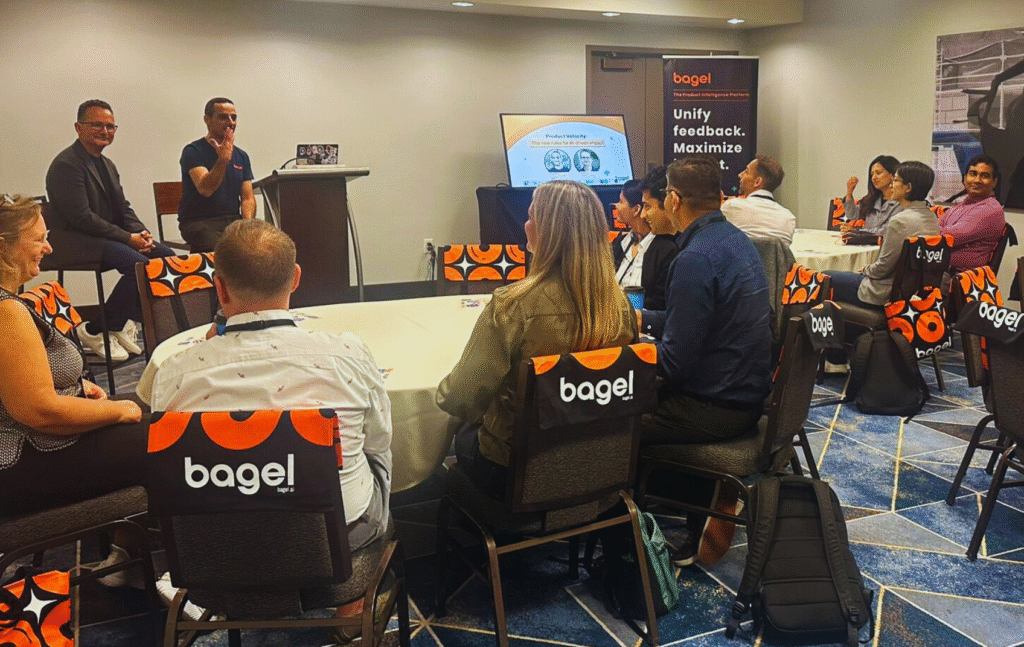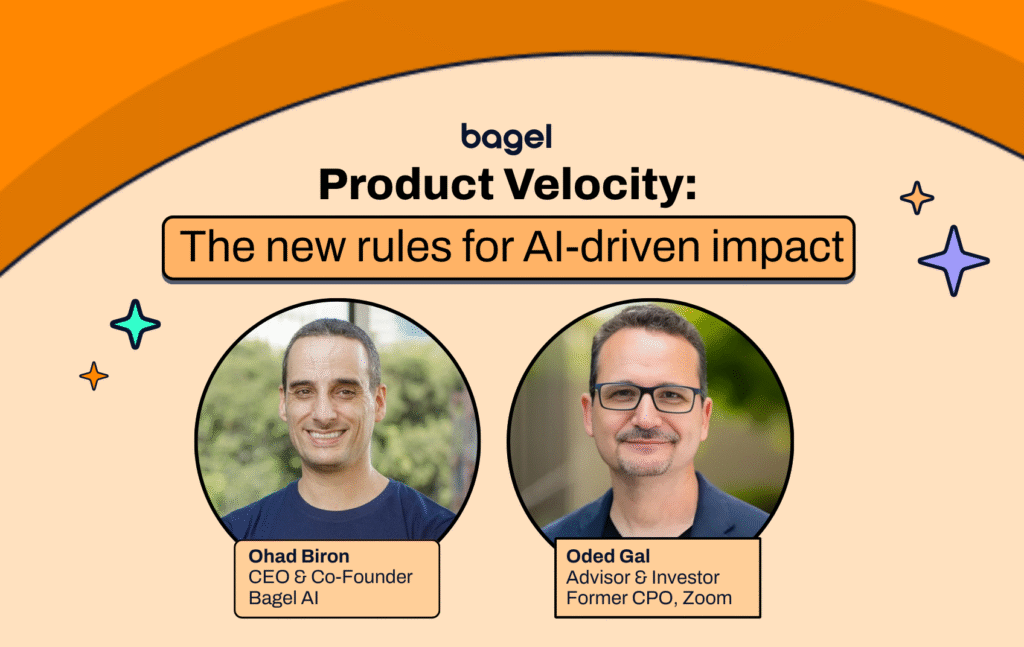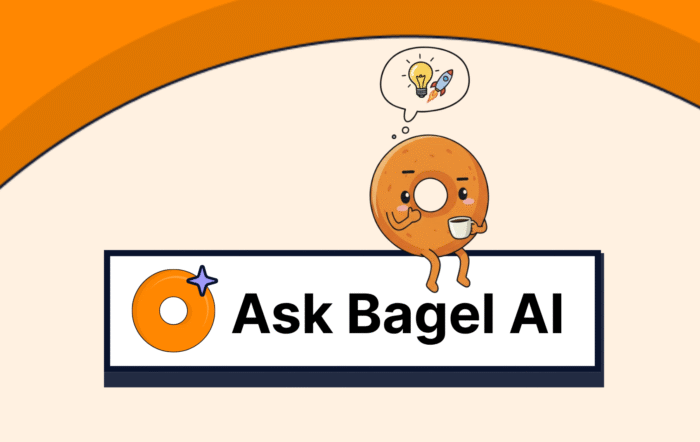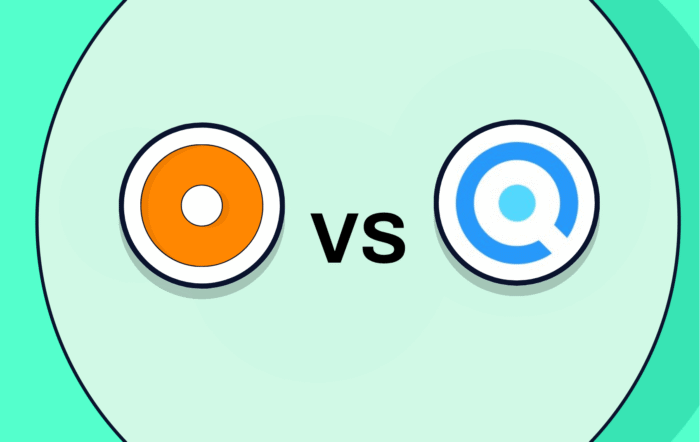Oded Gal (Former CPO, Zoom) & Ohad Biron (CEO & Co-Founder, Bagel AI)
TLDR: Key Takeaways
- Velocity is not feature count. It’s whether what you build is relevant and adopted.
- Modern velocity = decision quality × execution speed. AI sharpens the focus on business impact.
- AI accelerates analysis, not judgment. Customer conversations and product sense still decide outcomes.
- PMs are now measured like CROs. Roadmaps must tie directly to revenue, retention, and upsell.
- Prototyping matters. Scrappy builds and “vibe coding” move ideas forward faster than specs.
- Great PMs combine AI with human context. They are problem-finders who stay close to customers.
- Leadership sets direction. AI gives leverage, but clarity of purpose determines impact.

It’s Not About Moving Fast. It’s About Moving Right.
At Zoom, feature volume was once the headline. “We used to go on stage at Zoomtopia and say, ‘This year we shipped 500 features,’” Oded recalled. But during the pandemic, when usage spiked from 10 million to more than 300 million daily users, that metric became meaningless.
The challenge was no longer speed, but relevance. A misstep with live transcription highlighted the point. Zoom initially released it as a paid feature, only to face backlash from accessibility advocates who relied on it for daily communication. The team had to reverse course quickly and make it free for all users.
“It wasn’t just a feature decision,” Oded said. “It became a question of trust.”
Takeaway: Speed only matters when the output is relevant. True velocity is measured by whether customers can adopt and benefit from what you build.
Redefining Velocity in the Age of AI
Velocity is often reduced to Jira charts or story points. Ohad argued that those metrics say little about whether the team is solving meaningful problems.
“Velocity is the number of confident, context-aware decisions your team can make over time,” he said. “Not just how many things you shipped.”
Product work today is evaluated in business terms: retention, upsell, renewals, and deal blockers. That puts pressure on teams to connect roadmap choices directly to revenue outcomes. AI now plays a central role, helping product teams analyze scattered feedback and quantify impact in minutes rather than weeks.
Takeaway: Modern velocity is decision quality multiplied by execution speed. AI helps teams focus on the opportunities with the highest business impact.
AI Can Accelerate, but Not Replace Judgment
Both speakers agreed: AI is changing product development, but it cannot replace human judgment. Bagel AI, for example, uses tailored models to surface gaps linked to revenue. This reduces the time teams spend combing through feedback across tools.
“AI can get you to the critical insight faster,” Oded said. “But someone still has to decide what to do with it. You still need to talk to customers. You still need to feel the stakes.”
AI can highlight patterns and rank priorities, but product sense and customer conversations remain essential.
Takeaway: Use AI to reduce the noise, not the responsibility. Judgment and customer connection remain the foundation of product leadership.
PMs Are Being Measured Like CROs
A roundtable CPOs illustrated the shift. Nearly all said their CEOs now measure them on business impact, not delivery. “We’re seeing the rise of the revenue-measured PM,” Ohad said.
This shift is happening across organizations. Product managers are expected to validate early, build scrappy prototypes, and tie their work to financial outcomes. Oded pointed to the industry trend of vibe coding-creating quick, interactive prototypes to show flows and ideas. The goal is not technical polish but clarity and momentum.
Takeaway: Product success is no longer about output. PMs must connect features to revenue, retention, and growth while showing ideas in tangible form early.
What if your roadmap could talk in revenue?
Bagel AI ties every feature idea to customer evidence and revenue impact, so product decisions finally speak the language of the business.
The Modern PM Looks Different
Today’s product managers own the full loop from feedback to business impact. Curiosity, speed, and commercial awareness matter more than perfect processes. As AI handles analysis, PMs must focus on interpreting insights, making bets, and validating them with customers.
“Even when you have all the dashboards and AI support in the world, the best decisions still come from real conversations,” Oded said. Advisory boards and direct user input remain irreplaceable.
Takeaway: Great PMs combine AI-driven insights with human context. They are problem-finders who stay close to customers and move quickly to test solutions.
Final Reflection
This session did not hand out a framework. Instead, it reframed how product leaders should think about speed. Velocity is not just motion. It is the ability to learn, decide, and execute at the pace the business requires while ensuring the work has impact.
As Ohad summarized: “AI gives us leverage. But leadership still sets the direction.”



